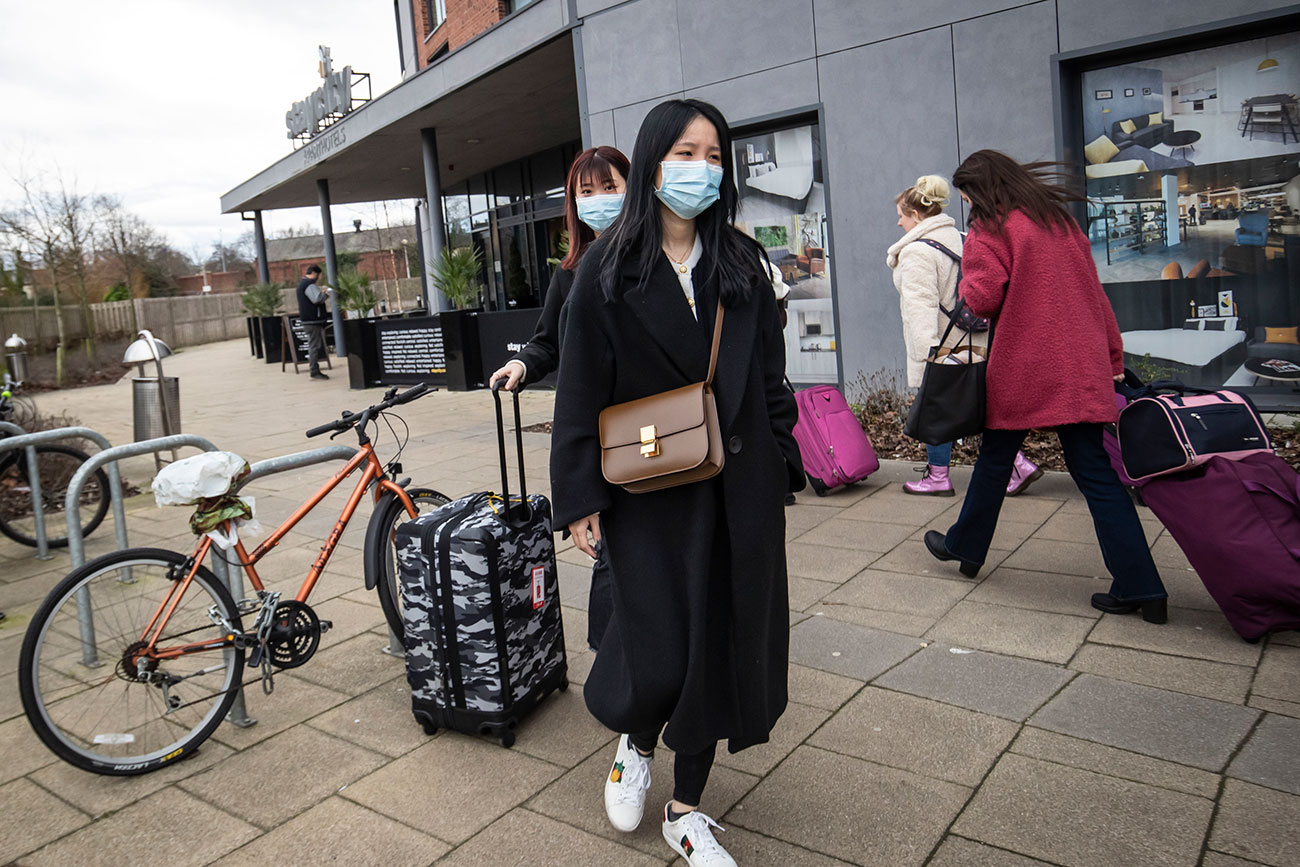One year ago today, a student fell ill and called the NHS 111 number.
Two paramedics from the Yorkshire Ambulance Service responded by heading to the 196-room Staycity apartment-hotel in Paragon Street, York.
Dressed in white hazmat suits, they headed to a first-floor room.
Soon afterwards it was confirmed that the student, aged 23, and his 50 year old mother, who had flown into the UK from Wuhan in China, were the first confirmed cases of coronavirus in Britain.
It was the news that was to spark a chain of events which have so far included three lockdowns, the decimation of the economy, and more than 100,000 deaths.
Looking back on that day, York health bosses say they were hampered by not having enough powers to respond as the pandemic took hold.
No panic

Sharon Stoltz, the city’s director of public health, revealed that she learned about the first two coronavirus patients in the UK from the York Press.
Communication with the Department of Health and Social Care and government bodies was “incredibly difficult” at the start of the pandemic and public health directors were often not the first to be told about what was going on, she said, adding that relationships have now improved.
But York, like other councils, had begun preparing for an outbreak before the first cases were identified 12 months ago.
“Clearly at that time York, along with every other local authority, was aware of the situation in Wuhan in China,” she said.
“We already had our outbreak plans in place and we were prepared to be able to respond.”
Cllr Carol Runciman said the news did not panic the council but that they knew it was important to reassure residents.
Cllr Runciman said: “We learned very quickly, but because we had an outbreak infection control system in place, ready to go really, it didn’t panic us. I don’t remember any panic at all.
“We were very cool and calm. And we did what we needed to do.
“One of the most important things was that we got communication on board, to get the messages out as we got them, so there were some quite quick reactions early on to make sure the public knew what we knew and what we could tell them.”
Contact tracing

The first two patients, a 23-year-old Chinese student studying at the University of York and his 50-year-old mother, were taken by ambulance to Castle Hill Hospital in Hull from Staycity on January 29 2020.
They were transferred to the high level isolation unit at Newcastle-upon Tyne NHS Foundation Trust on January 31.
Public Health England traced 52 contacts and no further coronavirus cases were linked to the first two patients, according to a paper in Epidemiology and Infection.
But Ms Stoltz said more cases seemed “inevitable” so the council got to work, teaming up with other organisations to respond to the situation. They have met regularly throughout the pandemic to review the challenges and changing situation in York and continue to do so.
She said: “Even though we only had the two cases at first in York and the virus didn’t spread, it was contained to those two cases, it was almost inevitable that having had two cases in the UK, we would have more cases somewhere.”
But the response was nationally-led at first, she said, meaning it was difficult to move as quickly as local leaders wanted to.
“That’s one of the lessons learned for me,” Ms Stoltz said.
“What I hope the government has learned is that they need to engage with local authorities much earlier in the process.

“Directors of public health have the statutory duty to protect our population.
“We have the relationships locally, we have got the systems to be able to respond to local needs.
“And I hope that the government has learned from this pandemic that if we have anything like this again, they need to devolve more responsibilities and the funding to local authorities, to allow us to do that local response.
“Maybe we would be in a different place right now, with the pandemic, if the government had involved local authorities much sooner in that process.
“We’ve got there now – but it took 10 months, really, for local authorities to start to get the data we needed, to be allowed to be able to set up our own contact tracing and testing
“If that had happened much sooner, last spring, then maybe we would have got a grip of it earlier.”
Local response

And Ms Stoltz was quicker to move than national policies. She urged York residents to wear a mask, in response to increasing evidence that it could help slow the spread of the virus, before it became national guidance.
York’s public health team also pushed for permission to do its own contact tracing and for more test centres to open. The city now has a vaccination hub, which last week was revealed as one of the best performing in the region.
Ms Stoltz said: “As soon as we were able to do our own contact tracing, that’s gone from strength to strength and is going very well and now of course we have our own testing in the city as well.
“Things have obviously developed as the need has gone on.”
Cllr Runciman said clear communication from local organisations is crucial to helping people know what they can do and where they can go for help, with messages from councils, charities, newspapers, radio stations and websites that they know and trust.
She said: “That’s another thing the Government need to realise, it’s all very well doing briefings central briefings with three people behind desks, but it actually has far more impact if your local councillors, your local paper, your local public health team are saying some thing to you.
“It means something to you because you know them.”
